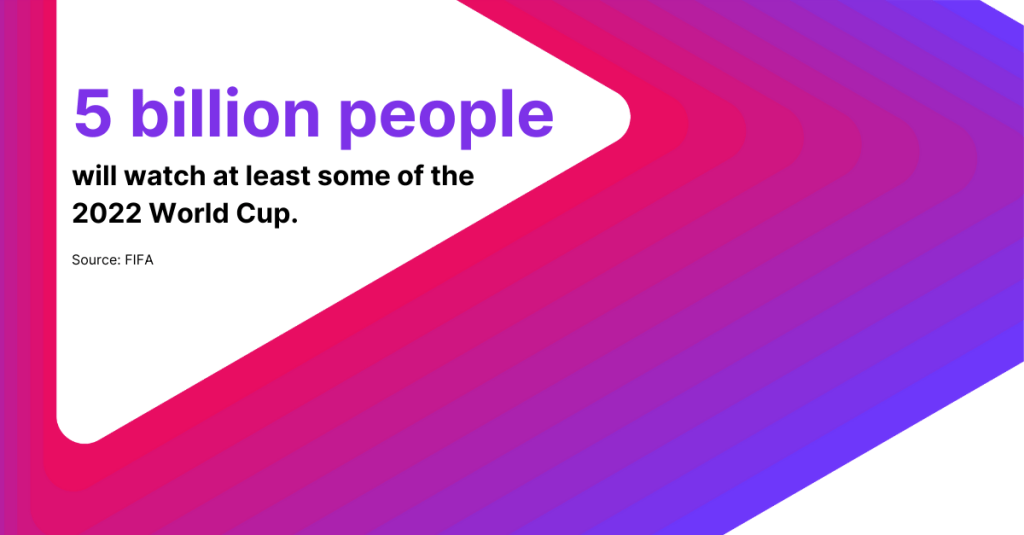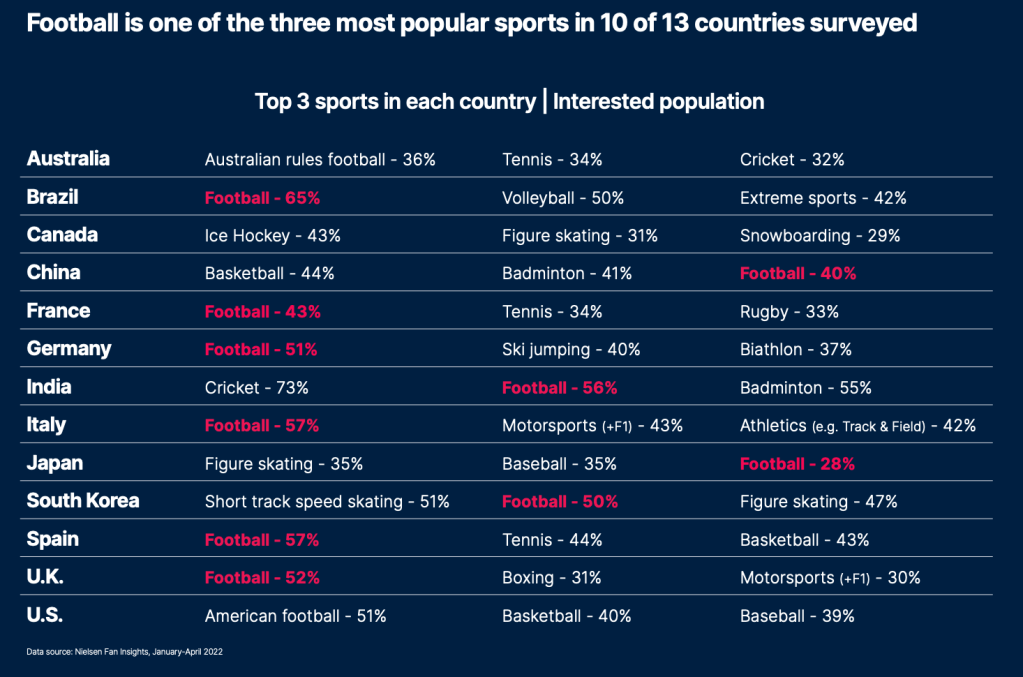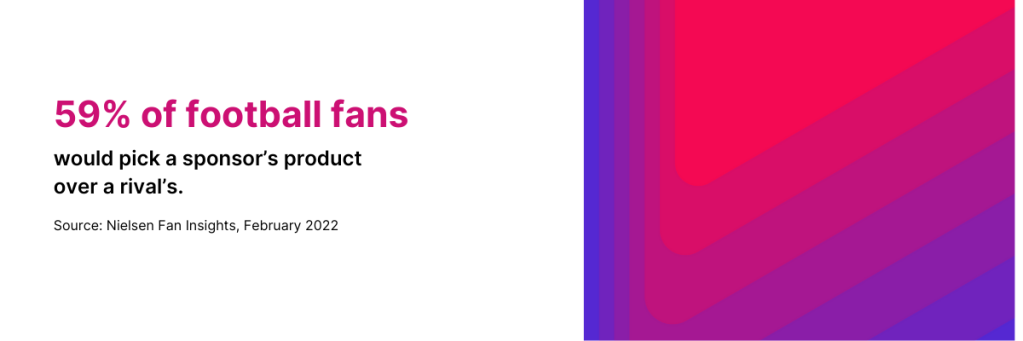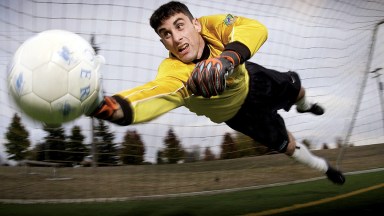The FIFA World Cup 2022™ is nearly here. And with FIFA projecting an audience of 5 billion watching at least some of the month-long event, the World Cup offers a chance for the entire media ecosystem—from the broadcasters, streamers and platforms to brands and rights holders—to score big with fans, and turn team loyalty into brand loyalty.

With 40% of the global population taking an interest in football, it’s no surprise the sport is the most popular in the world. In fact, 10 of the 13 regions we surveyed include football in their top three most-popular sports.

The World Cup has the highest awareness of any sporting event at 95% of sports fans. And for football fans, the World Cup is the ultimate sports experience. The month-long tournament features 32 national football teams competing in 64 matches, with a final game that hundreds of millions of people will watch.

And the reach of the World Cup extends far beyond the pitch, with match updates, scores and the latest player news taking over fans’ screens, airwaves and social feeds. With so much happening, the competition for attention is almost as fierce as the face-offs happening on the field. To keep audiences engaged, brands need to create a seamless, cross-platform experience that provides relevant information, to enhance the viewing experience. Given the diversity of the World Cup audience, brands and marketers who want to make the most of the opportunity to attract new buyers need to make sure they’re reaching the right audience on the right platform, at the right time.
When it comes to platform, fans prefer to watch live matches, and 81% tune in to free-to-air TV for their footie fix. Social media viewing is gaining in popularity with 72% of fans watching the action via apps, while 68% view on over-the-top (OTT) streaming devices and 62% paying to watch matches. This means brands, publishers and platforms have the ability to get creative with how they engage audiences across multiple devices. But the key to engagement on any platform is data.
A leading smart TV manufacturer, for example, partners with Nielsen Gracenote to elevate its audience experience by blending live action event coverage with scores, stats and play-by-play details. The manufacturer also uses Gracenote data to power its alarm feature, which keeps fans updated on the action in real-time, even when they’re viewing other content, delivering a robust, all-inclusive experience. And during the 2022 Beijing Winter Olympics, broadcasters used Gracenote data to power their results, schedules and standings content over the course of the games, providing fans with up-to-the minute information about their favorite events and athletes.
For many brands, sponsorships are a way to build awareness and engagement with football audiences. For example, in May of 2022, TikTok announced it would be the official partner of the UEFA Women’s EURO 2022. Through the partnership, TikTok users are able to access exclusive behind-the-scenes tournament footage. This content amplifies TikTok’s own video content with dynamic effects, and reinforces the platform as a go-to space for all things football fandom.
And these sponsorships just don’t drive brand affinity—they drive sales. Our survey found that 59% of football fans would favor a sponsor’s product over a rival’s brand if price and quality were the same.

With roughly 80% of fans browsing social media or using an app during a game, there are even more possibilities for brands to connect with their target audience through influencer marketing. And when it comes to influencers, football has some of the most impactful.
Footballer Cristiano Ronaldo is the most-followed person on Instagram, with over 461 million followers. And when HUGO BOSS launched its international #BeYourOwnBoss campaign, German footballer Grischa Promel was one of only three influencers out of 200 in the campaign who achieved more than a 25% engagement rate, outperforming top social media influencer Kylie Jenner and popular Marvel actor Chris Hemsworth.
And all this fan engagement is helping convert viewers to buyers. Nielsen’s Brand Impact service has measured the effectiveness of influencer ads in nearly 200 campaigns. According to the Q1 2022 norms from this research, influencer ads drove a nine-point increase in purchase intent relative to consumers who did not see the influencer ads.
With its massive global audience, the World Cup represents a unique opportunity to capture the attention, and win the loyalty, of new audiences. And the brands that will score big are the ones able to harness the power of data to deliver a responsive viewing experience that immerses fans in the drama of the game and never leaves them guessing on where to find the information or entertainment they want.
Check out our FIFA World Cup 2022™ data hub for the latest football insights!



